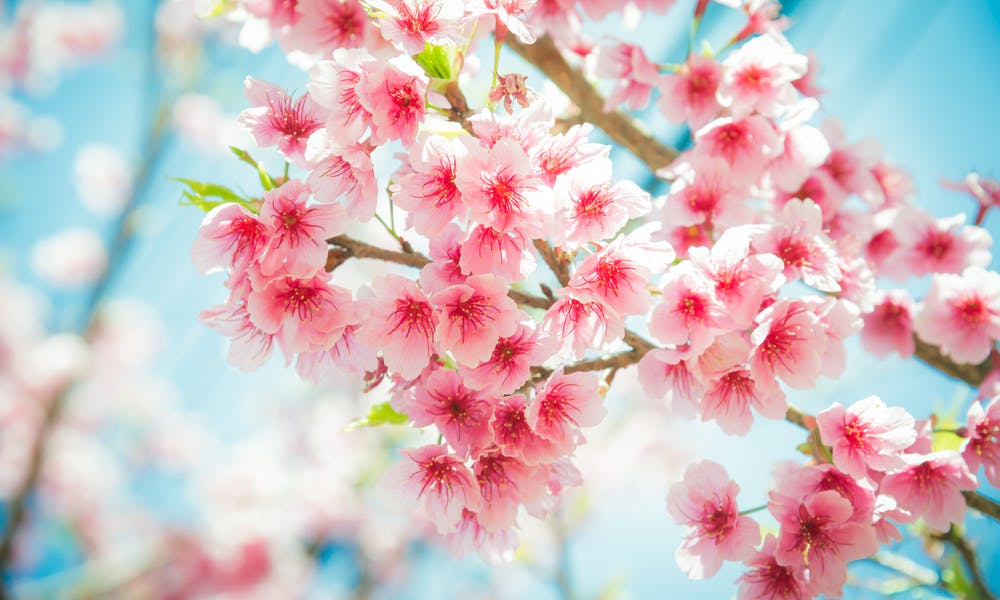Flowers are wonderful! If you are here reading this article, it is surely because you think the same and you want to know more about them. This beautiful composition of nature holds so much grace and meaning hidden under their subtle variation of colors, perfumes, and shapes. They are perfect for every occasion, every mood, every personality, and they are the perfect tool you need to express all your feelings.
Japanese culture is rich in history, art, and values. However, nature holds an important place in it. Indeed, the Japanese value nature above all. You can notice this by seeing their amazing gardens, their rich medical history based on plants, their poems, their painting, and their fear of the grandeur of Mother Nature. Moreover, if there is a global language of flowers used in different parts of the world, the Japanese have their own called “Hanakotoba,” which means “flowers’ words.
In this article, we are going to talk about this special Hanakotoba and other specificities of the Japanese culture, including the following:
* Japanese history and beliefs about flowers
* Lovely flower for each month
* What is the Hanakotoba?
* The beautiful art of flowers in Japan
Japanese History and Beliefs about Flowers
Japan has an unparalleled charm. Many traditional rites devote a privileged place to flowers and their contemplation. The mixture of refinement and meditation invites the inhabitants to serenity, guided by the rhythm of the blooms.
In fact, Japanese flowers are a key element of tradition. The arrival of spring is a national event in Japan enjoyed every year. The importance of flowers for the Japanese is coming from their historically oldest Shinto beliefs. In this ancestral religion, “Shintoism,” the key word is nature and respect for its elements.
Then, the arrival of Buddhism has completed linking the inhabitants to the plant world. The numerous offerings to Buddha (mainly composed of flowers) even led to the creation of a floral art unique in the world.
The chrysanthemum flower, used for the first time by the emperor Go-Toba (about 8 centuries ago), currently represents the imperial seal and appears on passports and diplomatic papers.
Lovely Flower for Each Month
It is common in Japanese culture to give a special flower for each month. For instance, January is represented by Plum blossoms, also called ume. One of the most popular places to find them is Yoshino Baigo in Okutama, a city in the north of Tôkyô prefecture, with no less than 25,000 plum trees.
For April, the Japanese flower, which symbolizes spring, is the cherry blossom! If you are in Tôkyô, we advise you to organize a visit at Shinjuku kôen, Ueno kôen or Yoyogi kôen. If you are more on the side of Kyoto, you can go to the Maruyama kôen, but the ideal would be to push up to Nara to admire the 30,000 cherry trees of Mount Yoshino. The park of Himeji Castle, in Hyôgo, is also very popular!
The Japanese iris, hanashôbu, is one of the Japanese flowers of June. It evokes good news and loyalty.
What is the Hanakotoba?
Hanakotoba means simply Flowers’ words. It is a special Japanese language of flowers that communicates by expressing different feelings through flowers. Because of the special meaning and feeling of each composition, the bouquet is sometimes more impactful than simple words alone.
First, there is the cherry blossom. It is one of the most symbolic flowers in Japan. This beautiful little flower means purity and gentleness of heart. Sadly, this flower does not get to live longer, and this is why it serves as a reminder of how much life is short and that it is important to live with your best intentions each day.
There is also, the famous Camellia, which strongly referring to the Noble Death in Hanakotoba. It refers to how the flower dies. In fact, most flowers begin to wilt and lose their petals slowly one by one, but the honorable camellia tends to lose them all at once.
The Beautiful Art of Flowers in Japan
Japanese culture is rich in meanings, and so are their compositions of flowers! You want the perfect combination to express your deep caring love to your lover, family, and friends. This is why the Ikebana exits. It refers to a Japanese word meaning the way of flowers is the Japanese flower art par excellence. If it has been actively practiced for five centuries, and its origins go back more than 13 centuries in the past.
This floral arrangement is based on a linear construction, where the directions of the flowers symbolize three main axes: humanity, heaven, and earth. The composition, whose structure is generally sober, aims to enhance the container, like the branches, stems, and flowers. The spread of ikebana around the world means that many new elements have come to enrich it, with a creative passion and deep respect for its principles which have prevailed for six centuries.
It is never easy to choose the best composition for a bouquet. In fact, it is easy to go for a simple one with basic roses. The Japanese language of flowers, also called Hanakotoba that stands for “flowers’ words,” can offer you whole new words of composition and meanings. Indeed, because of the richness of the Japanese culture and their big respect for nature’s beauty and amazingness, they gave flowers so much time and deepness in their interpretations.
Choose the sakura, the camellia, the red poppy, or the violet flowers to express your feelings to your dear family and friends through them. Your flowers can surely make them happier than ever and bring some joy into their heart! They can also relieve them from their stressful life by giving it a touch of beauty and sweet scent, there is science behind this statement!
